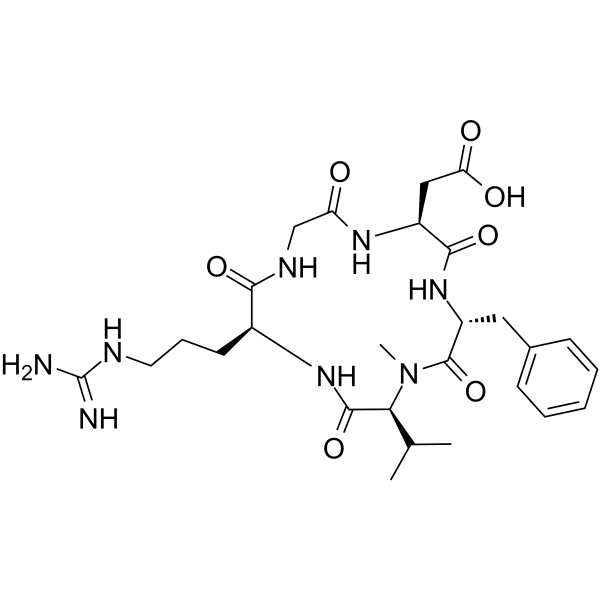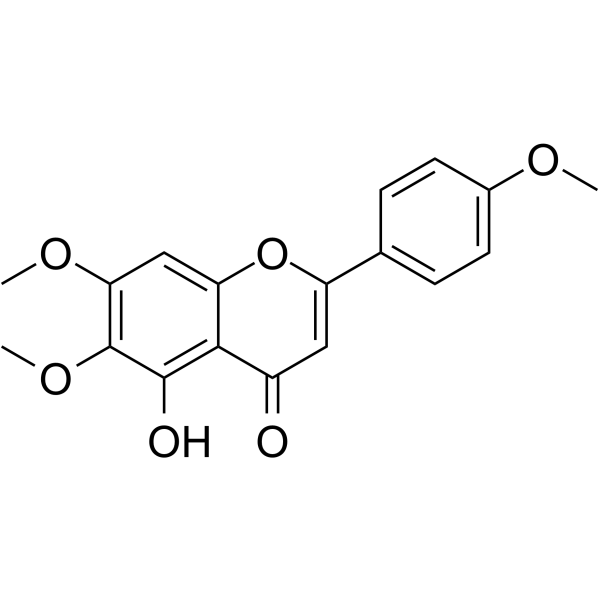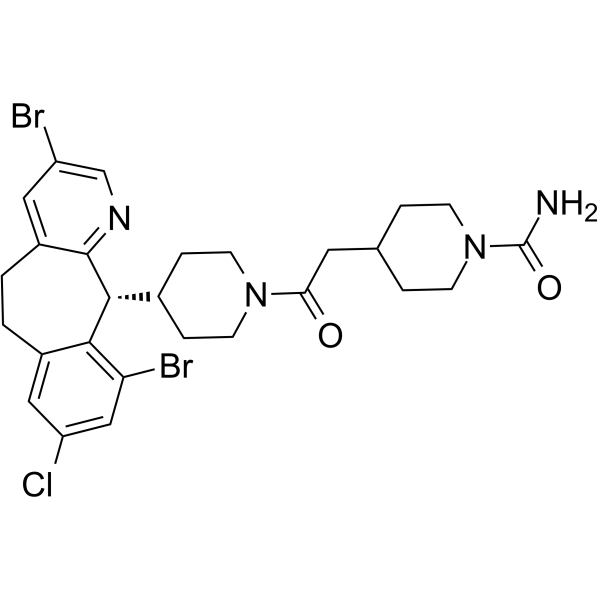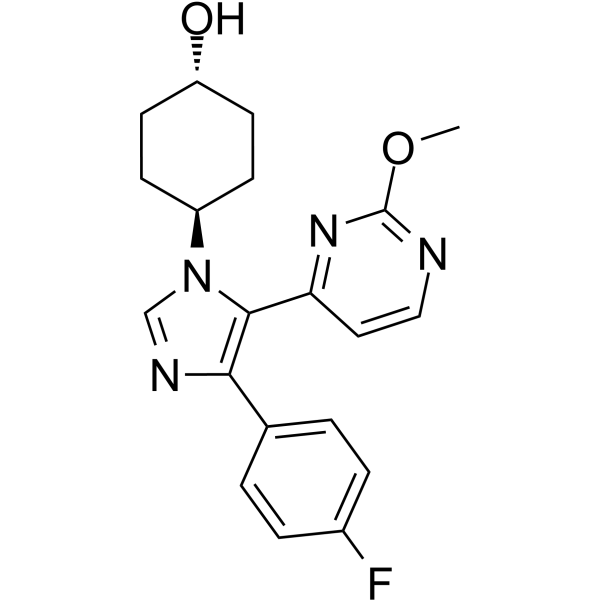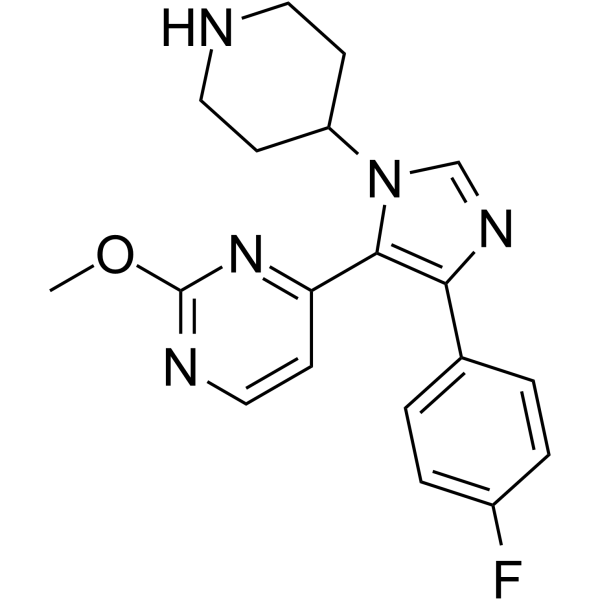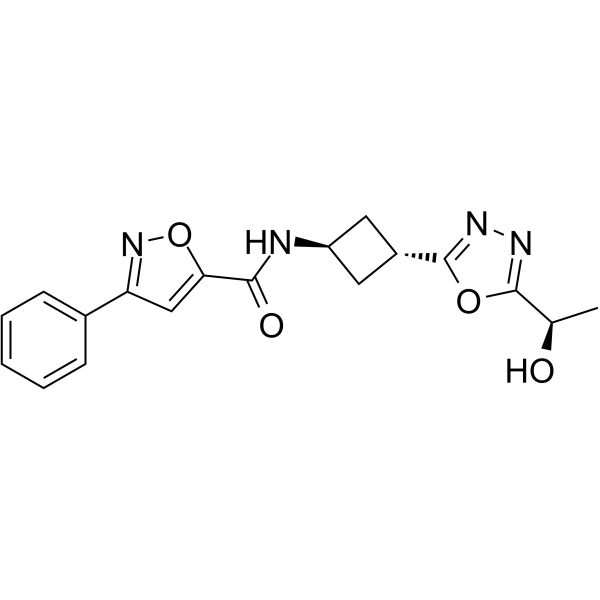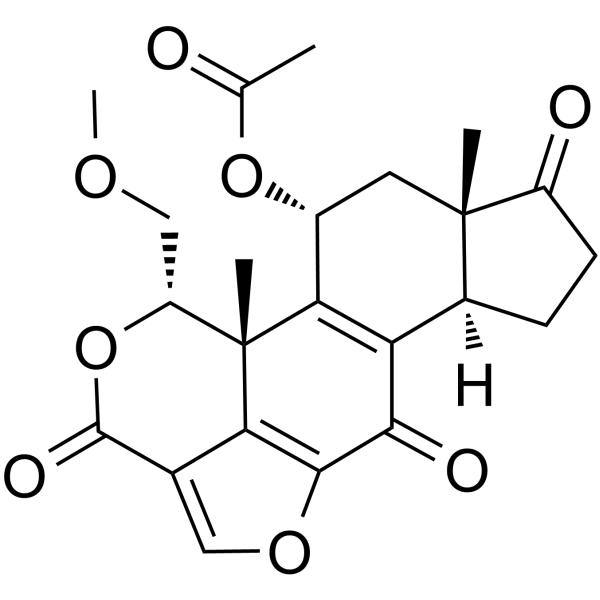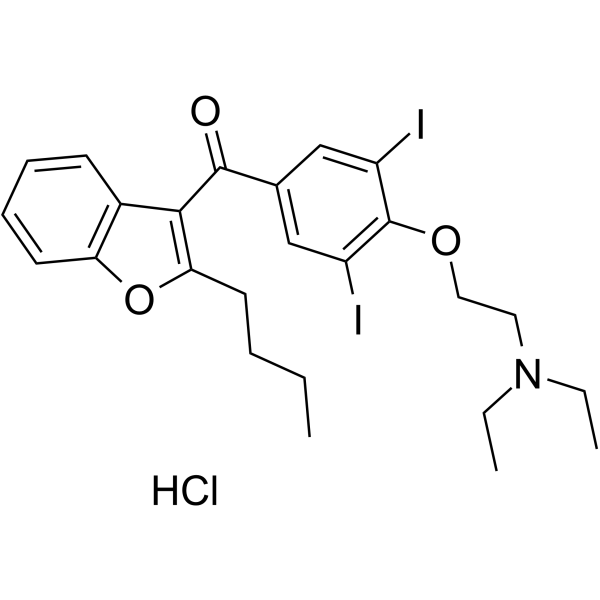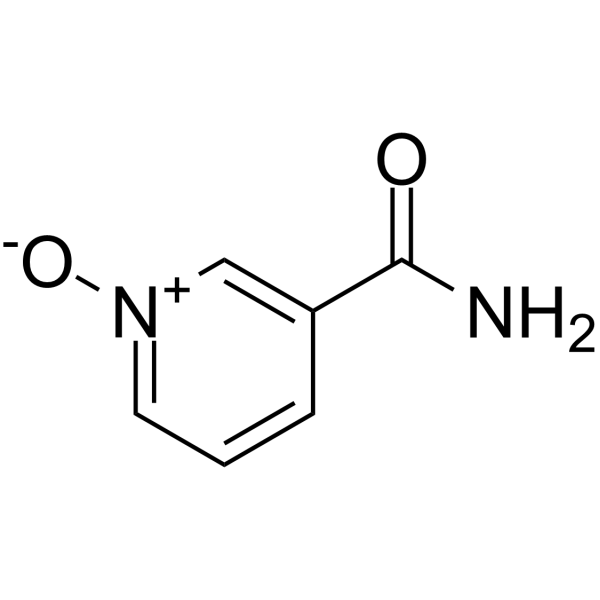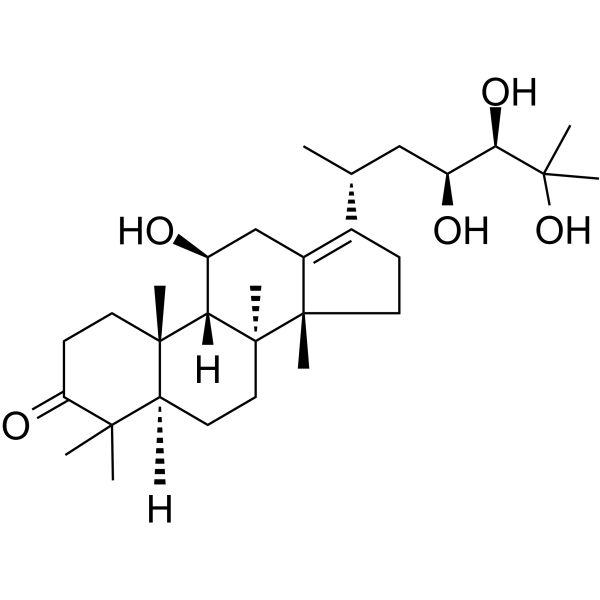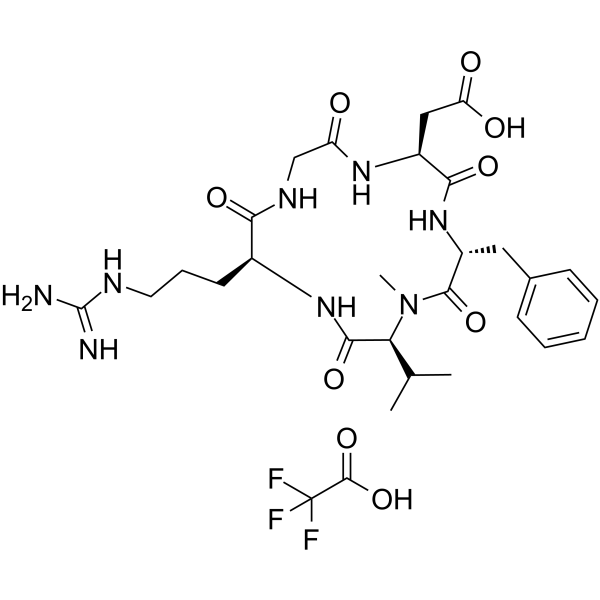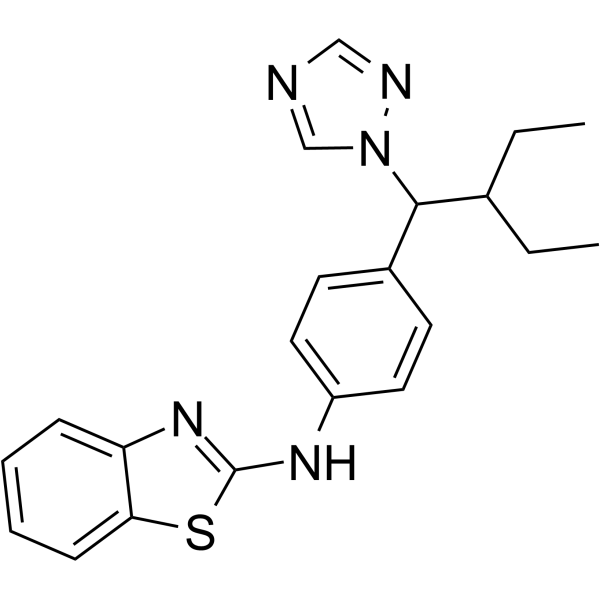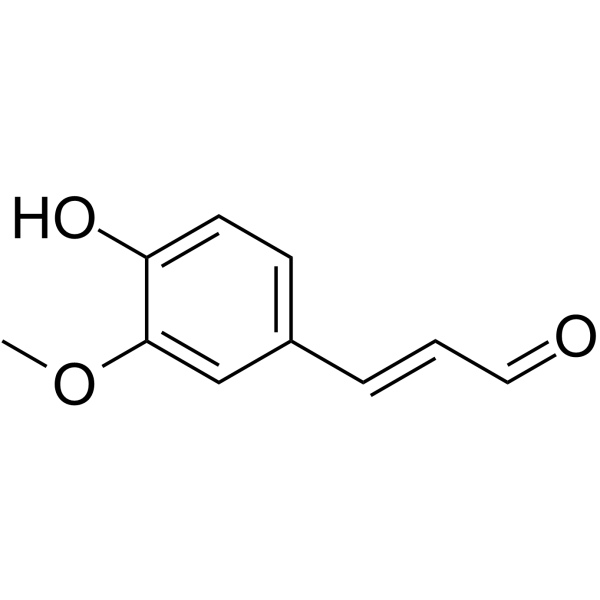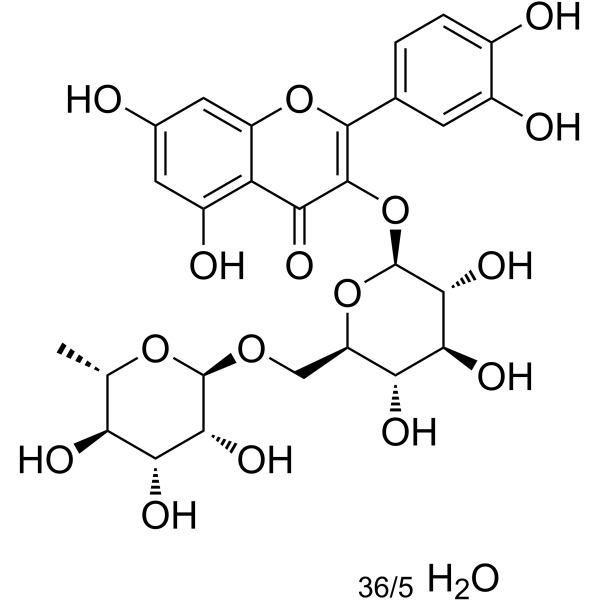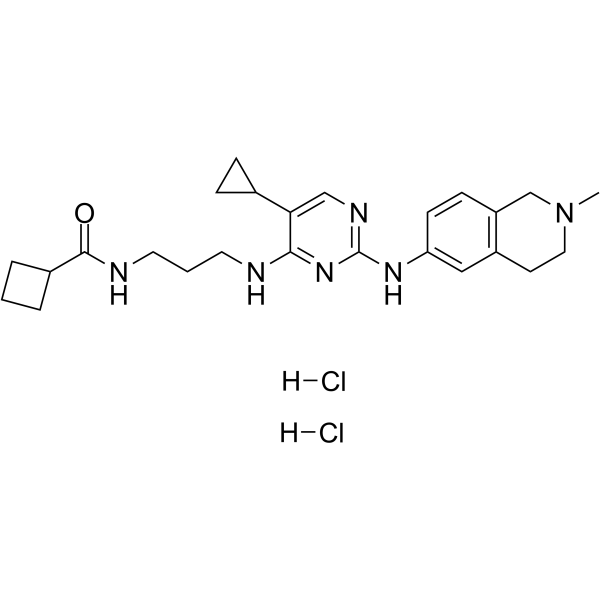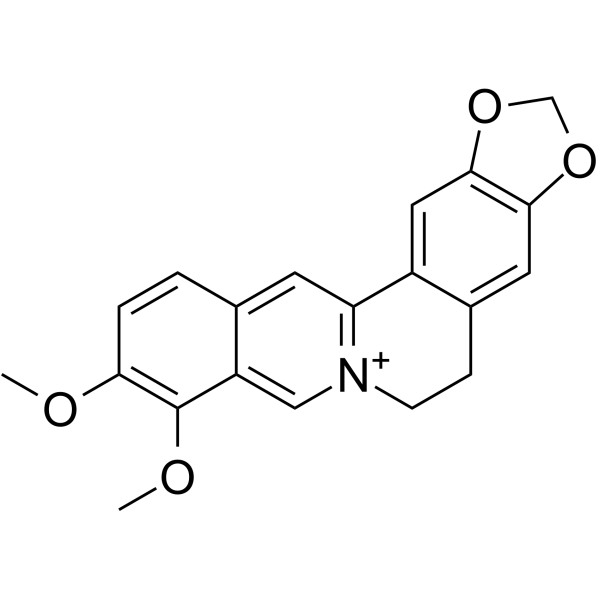|
BP12538
|
Cilengitide
|
|
|
|
|
Cilengitide is a potent integrin inhibitor for the αvβ3/5 receptor (IC50: 4.1/79 nM, in cell-free assays); ~10-fold selectivity against gpIIbIIIa.
|
|
BP12539
|
Salvigenin
|
|
|
|
|
Salvigenin is a potent hMAO-A inhibitor, has neuroprotective, antitumor and immunomodulatory effects.
|
|
BP12540
|
Cudraflavone B
|
|
|
|
|
Cudraflavone B has anti-proliferative activity, mouse brain monoamine oxidase (MAO) inhibitory effects, apoptotic actions in human gastric carcinoma cells and mouse melanoma cells, and hepatoprotective activity. It may be a lead for the development of a potential candidate for human oral squamous cell carcinoma cells.
|
|
BP12541
|
Lonafarnib
|
|
|
|
|
Lonafarnib is an orally bioavailable FPTase inhibitor for H-ras, K-ras-4B, and N-ras (IC50: 1.9/5.2/2.8 nM).
|
|
BP12542
|
SB 239063
|
|
|
|
|
SB239063 is a potent and selective p38 MAPKα/β inhibitor with IC50 of 44 nM, showing no activity against the γ- and δ-kinase isoforms.
|
|
BP12543
|
SB 242235
|
|
|
|
|
SB-242235 is a potent and selective p38 MAP kinase inhibitor that may be an effective therapy for cytokine-mediated diseases.
|
|
BP12544
|
Nesolicaftor
|
|
|
|
|
PTI-428 specifically enhances cystic fibrosis transmembrane conductance regulator protein synthesis.
|
|
BP12545
|
Wortmannin
|
|
|
|
|
Wortmannin is the first described PI3K inhibitor with IC50 of 3 nM, with little selectivity within the PI3K family. Also blocks autophagosome formation and potently inhibits DNA-PK/ATM with IC50 of 16 nM and 150 nM.
|
|
BP12546
|
FMK 9a
|
|
|
|
|
FMK 9a is an irreversible inhibitor of ATG4B with IC50 values of 80 and 73 nM in the TR-FRET and cellular-based LRA assays.
|
|
BP12547
|
3,3'-Diindolylmethane
|
|
|
|
|
DIM (3, 3'-diindolylmethane), a small molecule compound, is a proposed Y preventive agent.
|
|
BP12548
|
Amiodarone hydrochloride
|
|
|
|
|
Amiodarone hydrochloride is an antianginal and class III antiarrhythmic drug. It increases the duration of ventricular and atrial muscle action by inhibiting POTASSIUM CHANNELS and VOLTAGE-GATED SODIUM CHANNELS. There is a resulting decrease in heart rate and in vascular resistance.
|
|
BP12549
|
Nicotinamide N-oxide
|
|
|
|
|
Nicotinamide N-oxide is recognized as an in vivo metabolite of nicotinamide which is a precurser of nicotinamide-adenine dinucleotide (NAD+) in animals. The enzyme that catalyzes the reduction of nicotinamide N-oxide to nicotinamide in the liver is xanthine oxidase.
|
|
BP12550
|
Alisol A
|
|
|
|
|
Alisol A may be an autophagic inducer, it has anti-cancer activity, it presents inhibitory effects on cancer cell lines tested(HepG2, MDA-MB-231, and MCF-7 cells).
|
|
BP12551
|
Cilengitide TFA
|
|
|
|
|
Cilengitide is a potent integrin inhibitor for αvβ3 receptor and αvβ5 receptor with IC50 of 4.1 nM and 79 nM in cell-free assays, respectively; ~10-fold selectivity against gpIIbIIIa. Phase 2.
|
|
BP12552
|
Talarozole
|
|
|
|
|
Talarozole (R115866) is an oral systemic all-trans retinoic acid metabolism blocking agent (RAMBA) which increases intracellular levels of endogenous all-trans retinoic acid (RA). Talarozole inhibits both CYP26A1 and CYP26B1 with IC50s of 5.4 and 0.46 nM, respectively.
|
|
BP12553
|
Brefeldin A
|
|
|
|
|
Brefeldin A, a Penicillium brefeldianum metabolite, which is a macrocyclic lactone exhibiting a wide range of antibiotic activity. It is also an ATPase inhibitor for protein transport in HCT 116 cells(IC50=0.2 μM), inducing Y cell differentiation and apoptosis.
|
|
BP12554
|
Coniferaldehyde
|
|
|
|
|
Coniferaldehyde can significantly inhibit the growth of viability of strains of Oenococcus oeni. Coniferaldehyde exerts anti-inflammatory properties by inducing heme oxygenase-1(HO-1).
|
|
BP12555
|
Rutin hydrate
|
|
|
|
|
Rutin hydrate, a kind of glycoside, widely exists in many plants including citrus fruit.
|
|
BP12556
|
MRT68921 dihydrochloride
|
|
|
|
|
MRT68921 dihydrochloride is a potent ULK1 and ULK2 inhibitor (IC50 of 2.9 nM and 1.1 nM, respectively).
|
|
BP12557
|
Berberine
|
|
|
|
|
Berberine is a potent oral hypoglycemic agent with beneficial effects on lipid metabolism. Berberine may as a broad-spectrum anti-microbial medicine, a complementary therapeutic agent for HIV/AIDS. Berberine seems to act as an herbal antidepressant and a neuroprotector against neurodegenerative disorders. Berberine is used in histology for staining heparin in mast cells. As a natural dye, berberine has a colour index of 7516. Berberine reduces hepatic fat content in rats with nonalcoholic fatty liver disease; also prevents proliferation of hepatic stellate cells (HSCs), which are central for the development of fibrosis during liver injury. Berberine can ameliorate proinflammatory cytokines-induced intestinal epithelial tight junction damage in vitro, and berberine may be one of the targeted therapeutic agents that can restore barrier function in intestinal disease states. Berberine has antineoplastic effects, including breast cancer, leukemia, melanoma, epidermoid carcinoma, hepatoma, pancreatic cancer, oral carcinoma, tongue carcinoma, glioblastoma, prostate carcinoma and gastric carcinoma, etc.
|
